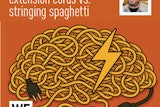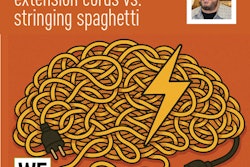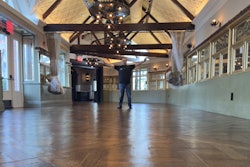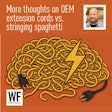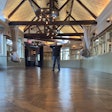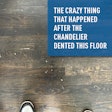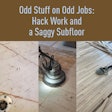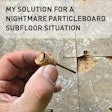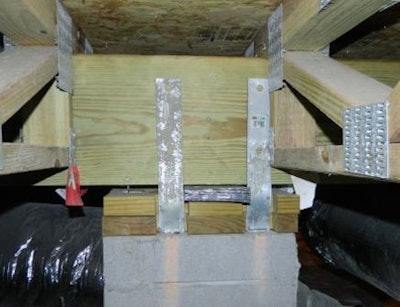
In my last post, I incorrectly stated that Michael Vick was involved with rooster fighting. He was not, and I apologize for that error.
Hurricane straps are supposed to hold a house down, but in this case they were holding the house UP. The straps are heavy metal bands that tie the framing to the ground to help keep the house from being blown away in high winds. In this house, they were embedded in the filled concrete block piers and nailed to the beams. The floor trusses were hung from the tops of the beams.
The homeowner pointed out some cracks and gaps in the hardwood floor in areas of the house. The gaps were pretty consistently about 4 feet apart, indicating a possible subfloor issue. So I crawled the crawl space. In an earlier blog, I said I would try to quit talking about crawl spaces this summer, but this one had some interesting twists. And I wanted to respond to Avi Hadad's not-so-serious question in Howard's blog about having to actually go into a crawl space. Yes, Avi, sometimes you do if you want the real answer.
Or can I, as an inspector, not go in the crawl space and just say, "The gaps are 4 foot on center. Therefore they are related to subfloor issues. See ya."? Or does it depend on the commissioning party?
Anyway, in this house, the homeowner had also noticed gaps between the beams and piers in the crawl space. The builder had come back and put some sheet metal shims in. Here's a photo of one pier:
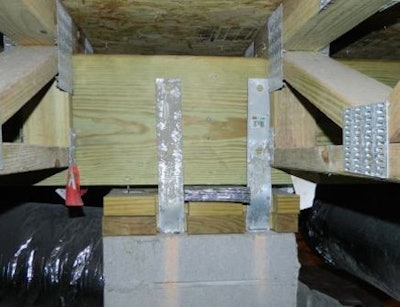
So the situation is this: A 2x12 preservative-treated beam was installed on top of the piers. The 2x12's were not re-dried after treatment, and water squirts out if you drive a nail into them. Now the beams are at 9% moisture content. I'll let you figure out how much a 11.25-inch pine board will shrink when dried from fiber saturation to 9% MC.
In a normal situation, the beams, floor joists and house would have all settled with the shrinkage. In this case though, the hurricane straps held the beam still, and the house didn't settle as the beam shrank. Instead, a gap formed under the beam.
We know wood flooring expands and shrinks as moisture content changes. It also happens to other wood members in a house. Those dimensional changes can cause issues with flooring, like humps, dips and gaps. And the issues can occur in houses with crawl spaces, basements or even second stories.
But wait, there's more with this house. And I'll cover those in next week's blog.










